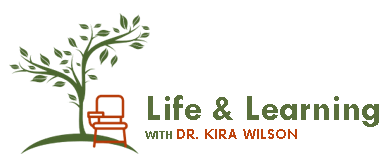Strategies to Improve Reading Comprehension
Reading comprehension is a necessary skill that becomes increasingly important as a child moves through the elementary years and begins to read for information in the content areas of history and science. The ability to focus, remember, and make sense of what is read can be a challenge for both beginning and seasoned readers. Comprehension makes reading meaningful and is developed with practice.
Strategies to Improve Reading Comprehension
The following strategies will increase readers’ ability to concentrate, retain the information they read, and make mental connections to improve understanding.
- Reading aloud. This strategy offers a second way to process information (visual and auditory) as well as more time to process what is being read, which can help with comprehension. Younger children may benefit from using a whisper phone to hear themselves read. This is especially true for students with speech impediments or children who struggle with decoding.
- Find a distraction free environment. Most children concentrate better in a quiet area.
- Read books at the appropriate level. Students should recognize 90 percent of the words on a page in order to understand what is read. For younger children five errors per page could indicate a frustration level of reading at which comprehension is lost.
- Reread to build fluency. Generally, this is a strategy used with younger readers to help with decoding and fluency, but it may be used by older students as well. Fluency is the ability to read smoothly without the disruption of having to sound out words. Fluency is developed after a student has learned to decode and learned sight words appropriate for their level. This skill is necessary for good comprehension.
- Increase sight word recognition.
 Word recognition can be a challenge for struggling readers and students with dyslexia. The typical reader needs to see a word up to 14 times before it becomes a sight word. A child with dyslexia, may need to see a word as many as 40 times before it becomes a sight word. There are no short cuts to word recognition and fluency. It is developed by reading books or in the case of common sight words, by using flash cards.
Word recognition can be a challenge for struggling readers and students with dyslexia. The typical reader needs to see a word up to 14 times before it becomes a sight word. A child with dyslexia, may need to see a word as many as 40 times before it becomes a sight word. There are no short cuts to word recognition and fluency. It is developed by reading books or in the case of common sight words, by using flash cards. - Build vocabulary. Increasing vocabulary is accomplished by reading to the child, engaging the child in conversation, and by the child reading. Having a strong vocabulary is key to reading comprehension. Reading aloud to the child is extremely effective in increasing vocabulary. Discuss new words that appear in the text, relating concepts or details to known experiences.
- Read supplemental material in subject areas when the text is difficult. Find library books at or below the child’s reading level on the topic being studied in science or history to increase general knowledge.
- Talk about what they're reading. Ask good questions before, during, and after a session to encourage reading comprehension. Here are some examples:
Before: What to you know about this subject? What would you like to learn about…? you?"
During: "Who are the primary characters? What is going on in the book? What do you think is going to happen? How has the character changed? What do you think will happen next?"
After: "Can you summarize the book? Compare the main character with ….? Did reading this book change your outlook or understanding of the subject? How?
- Understand sentence structure and cohesive thought. Breaking the writing process down and understanding writing structure and organization can help a child process reading material and make sense of the content. Consider the author’s intent, predict the outcome, and discuss inferences made by the writer.
- Critical thinking and background knowledge influences comprehension. This is where asking questions before can help a child understand and make use of the content. What does the reader know about the subject? Is there information that would help them process the written material, when shared in advance of the reading?
For example: Having some background knowledge of Jamestown (from a family vacation) will help that child better understand and comprehend a story about this 1607 settlement. Discussing what is already known will help the child make meaningful connections.
Engaging children in conversation not only develops background knowledge and vocabulary, it helps them make critical connections to the world around them.
- Teach child to self-monitor. Self-monitoring is the ability the reader has, to recognize when the text is not understood. The reader must stop and reread for understanding. Memory and attention are part of this process. Finding high interest reading material can help with both. This is not always possible with content areas like science or history. Consider the strategy of finding books below the child’s reading level to increase background knowledge before reading more challenging content area material.
 Highlight and take notes. In the content areas, look for key words and highlight important information. Review new vocabulary in advance of reading difficult material. Use the glossary in the back of textbooks or online if not understood in the text. Using another source for the meaning can be helpful. Use sticky notes to draw connections and make sense of the information. Taking notes is a way to summarize the text as a child reads.
Highlight and take notes. In the content areas, look for key words and highlight important information. Review new vocabulary in advance of reading difficult material. Use the glossary in the back of textbooks or online if not understood in the text. Using another source for the meaning can be helpful. Use sticky notes to draw connections and make sense of the information. Taking notes is a way to summarize the text as a child reads.

